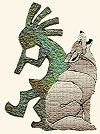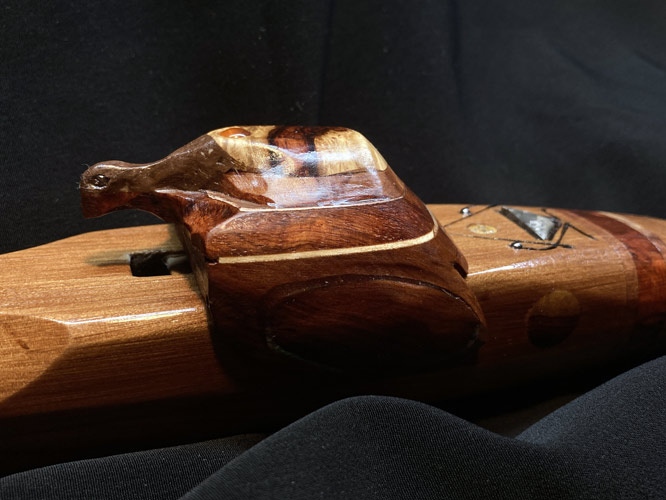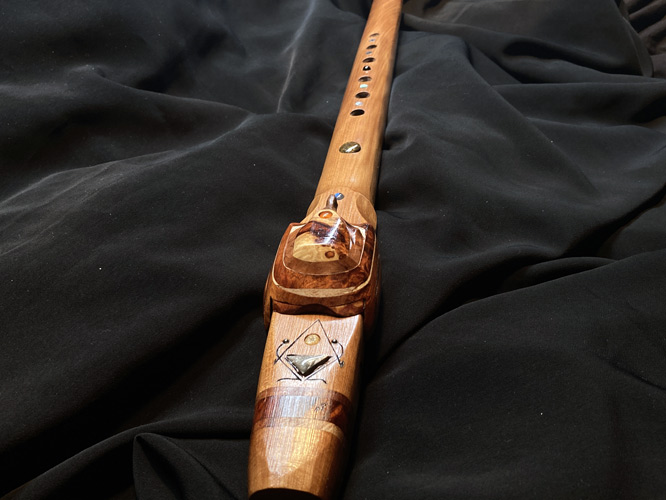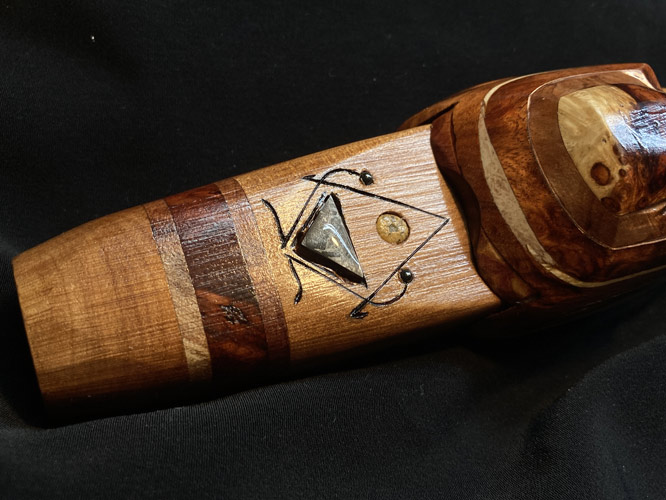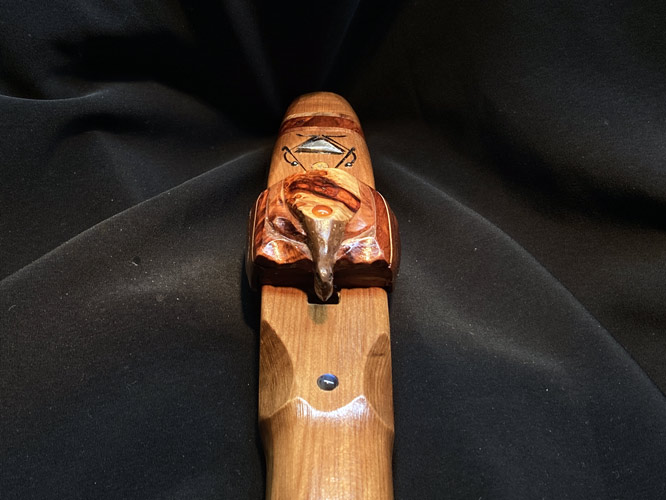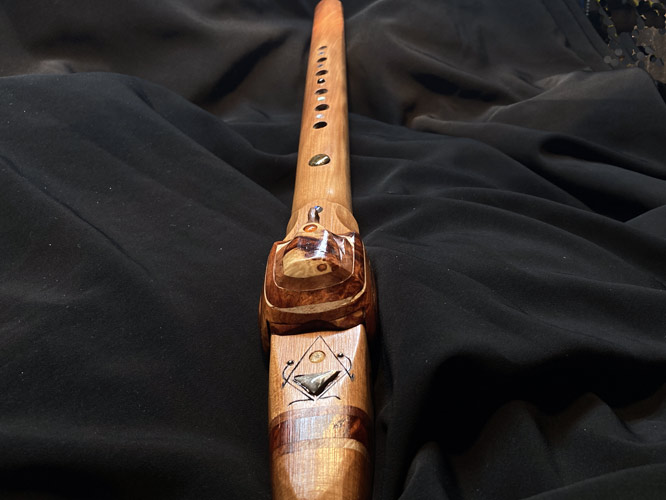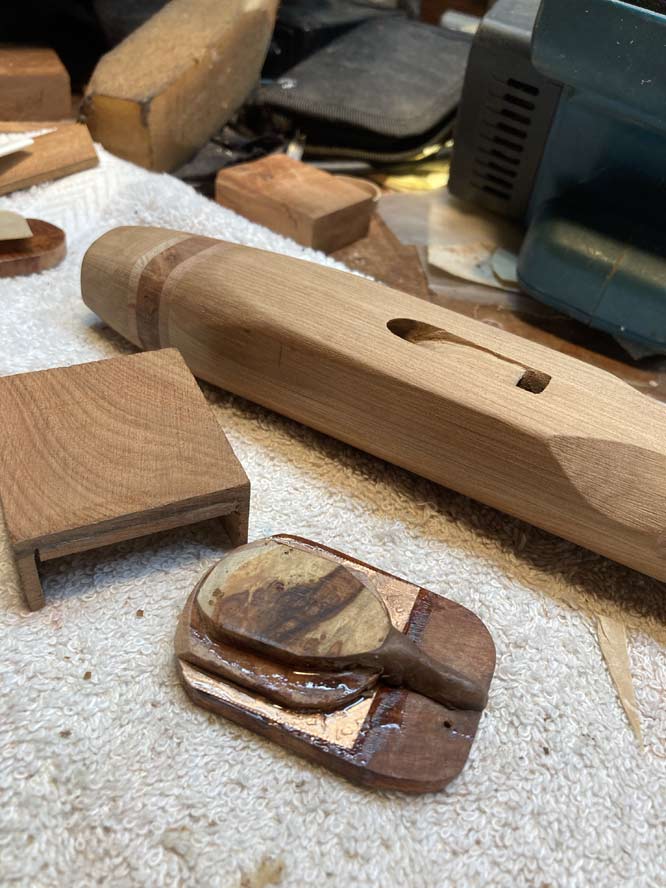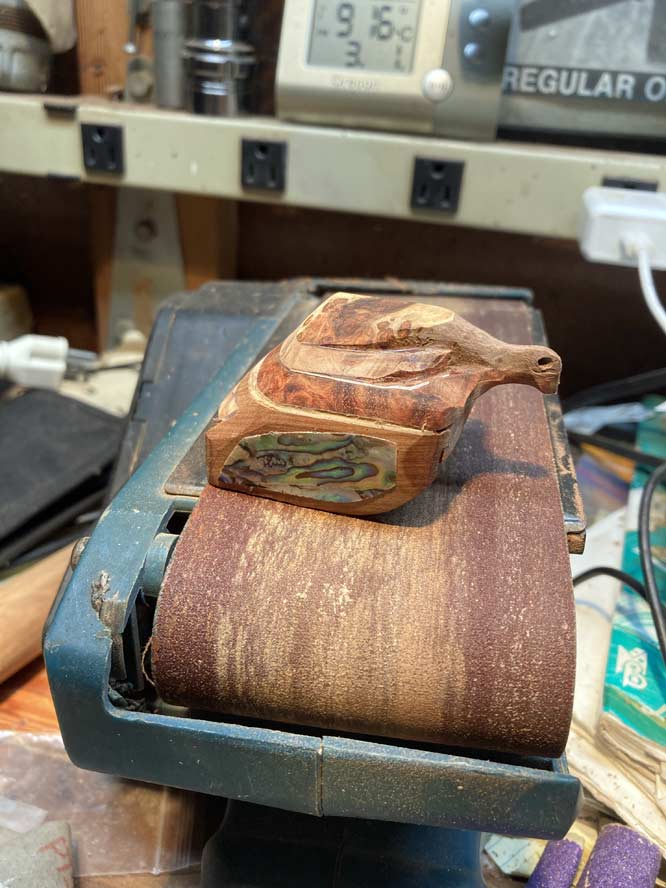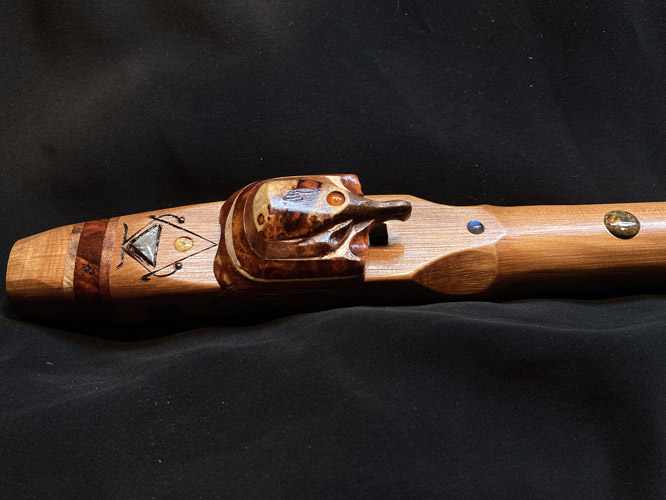$720.00
FREE DOMESTIC SHIPPING
Ancient Kauri Fm
1 in stock
Some instruments require more patience and present greater challenges than others. I felt I needed to experience both with this flute. The New Zealand Kauri is tuned to Fm, is 21-9/16” in length and has a 7/8” diameter bore. The material is approx, 50,000 years old, having been excavated from a bog that preserved the massive trees, and amberized the cellular voids, giving the material excellent tonal qualities. Additional woods, beginning at the mouthpiece, include SE Asian amboyna burl between layers of old growth redwood. And capped with the kauri.Moving to the compression chamber, it’s accented with 12.7mm disks of amboyna burl matching the cap material on the compression fit block. The block itself has a base cut from the kauri with an underlayment of Oklahoma red cedar for moisture control. The additional layers to the body include mappa burl, the amboyna burl, sheet copper, the old growth redwood and the referenced amboyna cap. Wing overlay includes addl. kauri over paua abalone.
The inlay material is interesting. The diamond cut piece of the Gibeon meteorite measuring 16.5×8.5mm at the mouthpiece was acid etched to show the “angular lines wherein two of the 8 compounds of cobalt, nickel and iron compounds realigned themselves during a cooling process while travelling 4 billion years through space from its original exploding star. It cooled at the rate of one degree Celsius for each 1000 years of travel through space. The fall date in Namibia was approx. 30,000 years ago travelling at 17,000 miles per hour, and spreading 220 linear miles. Forward from this piece is one of the earliest prehistoric terrestrial mushrooms ever discovered. (Prototaxite). At 400 million year old, it is 6.4mm in diameter, and not very attractive. Flanking these items are 2.4mm hematite beads. This iron oxide is plentiful on Mars, and was initially referred to as “Blueberries” by NASA rover controllers.
Moving forward from the true sound hole, sits a 6mm dome cut labradorite cab, known for it’s healing properties. Moving further South is a 12.5mm “Dragonskin” ammolite cab. Harvested on the Eastern slope of the Rockies, from the Alberta Bearpaw formation, this cephalopod survived 5 extinction events, and lived in the shallows of an inland sea extending from Alberta CN to present day New Mexico. This material is 70-130 million years old and consists of the internal shell of the ammonite. This beautiful material was declared rarer than diamonds by the International Gem Society in 1988. Moving to the end, the finger holes are accented with four 5mm abalone cabs, and a 6mm dome cut almandine garnet. Lastly, inlay to the fetish includes a 6mm dome cut cab of amber set to the crown of the bird, and 2mm faceted African cognac diamonds,set as eyes. If you think the block looks more like a turtle, then by all means, it is a turtle
Important ….The piece requires no ties, but positioning it correctly is vital to avoid breaking it. The underside of each wing includes two small dots of felt., Mounting the block requires an approach from the front forward from the square hole, and backing it up, like backing a vehicle into a parking space until the forward edge of the base, is just behind the back edge of the square hole. Bringing the fetish straight down into position like landing a helicopter risks snapping one or both wings. Removal is accomplished by pretending it’s an airplane, and you head it down the runway toward the finger holes.
The flute was tuned at a wood temp. of 77.9° F, an ambient temp. of 72.1° F. and a humidity factor of 30%…….@ 210 ft above sea level.
1 in stock
